Are you curious about the number of calories in a mouthwatering supreme pizza? Join me as we uncover the truth behind this beloved pizza and explore some healthier options for those watching their calorie intake.
In today’s fast-paced world, many of us are constantly seeking a balance between our favorite indulgences and maintaining a healthy lifestyle. When it comes to pizza, finding a low calorie option can seem like a daunting task. However, with the rise of “skinny slices” and healthier toppings, it is possible to enjoy a delicious supreme pizza without the guilt.
Pizza Hut, one of the leading pizza chains, is currently testing out “skinny slices” in select locations. These slices contain under 250-300 calories, achieved by using less dough and fewer toppings. This innovative approach allows pizza lovers to enjoy their favorite flavors while cutting back on calories.
It’s important to note that a regular slice of Pizza Hut pizza can contain anywhere between 180 to 470 calories, depending on the size and toppings. The move towards lighter options is part of a larger effort by the fast food industry to provide healthier choices to customers. However, past attempts, like Burger King’s lower-calorie fries and Domino’s whole wheat crust, have not been as successful.
Key Takeaways:
- Supreme pizza can vary in calorie content based on size and toppings.
- Pizza Hut is testing out “skinny slices” with under 250-300 calories per slice.
- Choosing lighter pizza options can help satisfy your cravings while reducing calorie intake.
- Previous attempts by fast food chains to offer healthier options have faced challenges.
- The rise of healthier pizza choices reflects consumer preferences for more nutritious options.
Counting the Calories: A Breakdown of Supreme Pizza
Before we dive into the calorie count, let’s take a closer look at the nutritional information of a typical supreme pizza. Loaded with a variety of toppings, a supreme pizza offers a delicious combination of flavors. However, it’s important to be aware of the nutritional facts to make informed choices about your pizza consumption.
On average, a regular slice of Pizza Hut pizza contains anywhere between 180 to 470 calories, depending on the size and toppings. But the fast food industry is now experimenting with lighter options to cater to health-conscious customers. Pizza Hut, for example, is testing out “skinny slices” of pizza in two U.S. cities, Toledo, Ohio and West Palm Beach, Florida. Each slice of the skinny pizza contains under 250-300 calories, achieved by using less dough and fewer toppings.
Now, let’s take a closer look at the nutritional breakdown of a supreme pizza. The exact calorie count may vary depending on the size and specific toppings, but let’s consider a typical 14-inch supreme pizza as an example. This size typically contains around 270-320 calories per slice, with approximately 12-15 grams of fat, 30-35 grams of carbohydrates, and 10-15 grams of protein. It’s important to note that these figures can fluctuate based on the crust thickness and the amounts of cheese, meats, and vegetables used.
So if you’re watching your calorie intake but still craving a satisfying slice of supreme pizza, options like Pizza Hut’s skinny slices can be a great choice. These lighter alternatives allow you to indulge in the flavors you love with fewer calories. Remember, moderation is key, and it’s essential to balance your pizza consumption with a healthy and well-rounded diet.

The Rise of “Skinny Slices”: Low Calorie Supreme Pizza Options
Looking for a guilt-free way to enjoy a supreme pizza? Enter the rise of “skinny slices” and low calorie options. As more and more people prioritize their health and watch their calorie intake, pizza chains are stepping up to the challenge by offering lighter alternatives without compromising on flavor.
One of the pioneers in this movement is Pizza Hut, who is currently testing “skinny slices” in two U.S. cities, Toledo, Ohio, and West Palm Beach, Florida. These slices are designed specifically for customers who are trying to cut calories without giving up their favorite food. Each slice of the skinny pizza contains under 250-300 calories, achieved by using less dough and fewer toppings.
A regular slice of Pizza Hut pizza, on the other hand, can contain anywhere between 180 to 470 calories, depending on the size and toppings. By opting for a “skinny slice,” pizza lovers can indulge in their favorite treat while staying within their calorie goals.
The move towards lighter pizza options is an attempt by the fast food industry to improve its image and cater to the changing preferences of consumers. Previous attempts, such as Burger King’s lower-calorie fries and Domino’s whole wheat crust, have not been as successful. However, the introduction of low calorie supreme pizza options shows promise in striking a balance between taste and nutrition.

| Pizza Size | Calories |
|---|---|
| Small | 180-280 |
| Medium | 250-390 |
| Large | 310-470 |
With the demand for healthier options on the rise, pizza chains are seizing the opportunity to provide low calorie supreme pizza choices. These alternatives not only cater to individuals looking to watch their calorie intake, but they also introduce new flavors and toppings that enhance the overall taste experience. So, the next time you’re craving a supreme pizza, consider trying out a “skinny slice” and embark on a guilt-free indulgence.
Pizza Hut’s Approach: Testing the Waters with Skinny Pizza
Pizza Hut is stepping up to the plate with their “skinny slices” of supreme pizza, offering a healthier alternative without compromising on taste. In a move to cater to customers who are conscious of their calorie intake, Pizza Hut is testing out these lighter pizza options in two U.S. cities, Toledo, Ohio, and West Palm Beach, Florida.
Each slice of the skinny pizza contains under 250-300 calories, achieved by using less dough and fewer toppings. This reduction in calories allows pizza lovers to indulge in their favorite food without feeling guilty. As shown in the table below, a regular slice of Pizza Hut pizza can contain anywhere between 180 to 470 calories, depending on the size and toppings chosen.
| Pizza Size | Calories per Slice |
|---|---|
| Small (10″) | 180-260 |
| Medium (12″) | 200-300 |
| Large (14″) | 240-340 |
| Extra Large (16″) | 270-470 |
The introduction of skinny slices is part of a broader effort by the fast food industry to improve its image and offer healthier options to consumers. However, past attempts, such as Burger King’s lower-calorie fries and Domino’s whole wheat crust, have not been as successful as initially hoped. Pizza Hut is determined to break this trend and provide pizza lovers with a guilt-free dining experience.
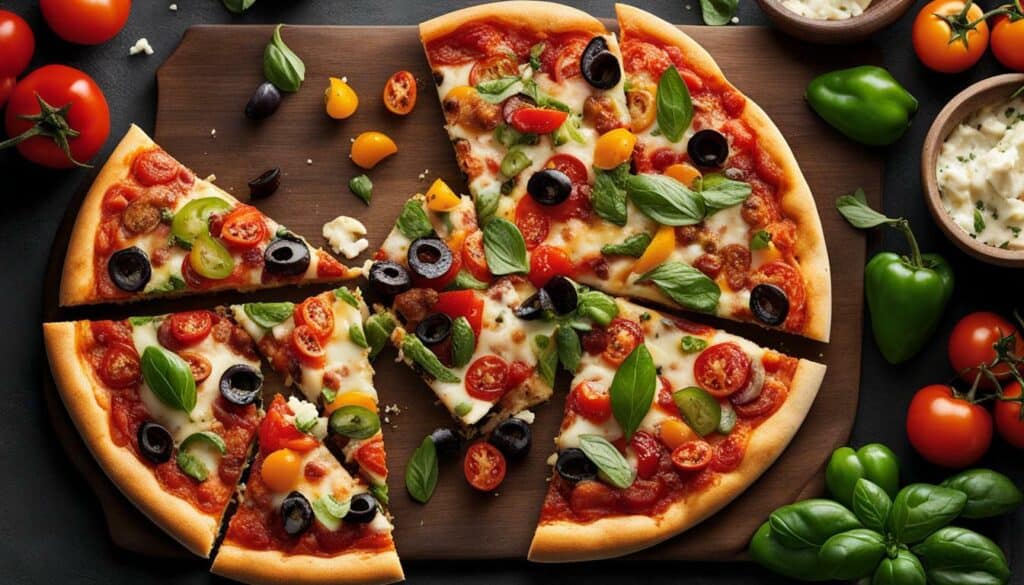
Slice by Slice: Understanding the Calorie Breakdown
Let’s break it down and calculate the calorie content of a mouthwatering slice of supreme pizza. This delectable combination of flavorful toppings and gooey cheese is a treat that many of us can’t resist. But how many calories are we really consuming with each indulgent bite?
The calorie content of a slice of supreme pizza can vary depending on several factors, including the size of the slice and the toppings used. To give you a better idea, let’s take a look at some typical calorie counts for different sizes of supreme pizza slices:
| Pizza Size | Calories per Slice |
|---|---|
| Small (10″) | 200-250 calories |
| Medium (12″) | 250-300 calories |
| Large (14″) | 300-350 calories |
Keep in mind that these calorie counts are estimates and can differ based on the specific toppings used. For example, if your supreme pizza slice includes pepperoni, sausage, or extra cheese, the calorie count will likely be toward the higher end of the range.
If you’re watching your calorie intake, you can use a calorie calculator to get a more accurate estimation based on the specific toppings and serving size you prefer. These calculators take into account the individual ingredients and their corresponding calorie values, allowing you to customize your pizza and still keep track of your calorie intake.

Now that you have a better understanding of the calorie breakdown of a slice of supreme pizza, you can make more informed choices when enjoying this delicious treat. Remember, moderation is key, and opting for smaller slice sizes or choosing healthier toppings can help you satisfy your pizza cravings while still maintaining a balanced diet.
Topping Choices: Making Your Supreme Pizza Healthier
Want to make your supreme pizza a healthier option? Let’s explore some tasty and nutritious toppings to elevate your pizza game. By incorporating fresh and wholesome ingredients, you can transform your favorite indulgence into a guilt-free treat.
First up, let’s talk about the crust. Opting for a whole wheat or cauliflower crust can add a nutritional boost to your pizza. These alternatives provide more fiber and are lower in carbohydrates compared to traditional crusts. Plus, they still deliver that satisfying crunch we all crave.
Now, let’s move on to the sauce. Instead of using a heavy, calorie-laden tomato sauce, try spreading a thin layer of pesto or olive oil infused with garlic and herbs. These flavorful alternatives not only add a delicious twist but also reduce the overall calorie content of your pizza.
When it comes to toppings, load up on colorful vegetables. Bell peppers, mushrooms, spinach, and tomatoes are not only packed with vitamins and minerals, but they also add a delightful crunch and burst of flavor. You can also experiment with lean proteins like grilled chicken or turkey sausage to make your pizza more filling and nutritious.
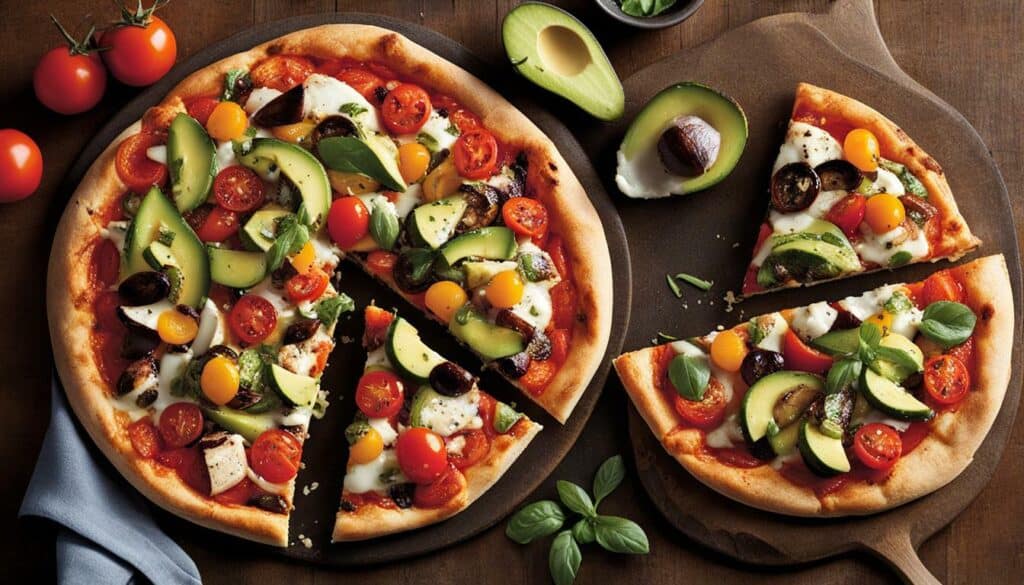
| Topping | Calories | Health Benefits |
|---|---|---|
| Fresh Spinach | 7 | High in iron and vitamins A, C, and K |
| Sliced Mushrooms | 22 | Great source of antioxidants and fiber |
| Colorful Bell Peppers | 24 | Rich in vitamin C and other essential nutrients |
| Grilled Chicken | 73 | Lean source of protein |
| Turkey Sausage | 30 | Lower in fat compared to traditional sausage |
Quote:
“Choosing healthier toppings doesn’t mean sacrificing flavor. In fact, it can enhance the taste and nutritional value of your pizza. Get creative and experiment with various combinations to find your perfect healthy supreme pizza!”
Remember, moderation is key, even when it comes to healthier pizza options. While these toppings offer nutritional benefits, it’s important to keep portion sizes in check. Enjoy your homemade healthy supreme pizza in moderation as part of a balanced diet, and savor every guilt-free bite!
The Fast Food Industry’s Attempt at Healthy Options
The fast food industry is striving to meet the demand for healthier options, including low calorie supreme pizza. Let’s examine their efforts.
One major player in the industry, Pizza Hut, is testing out “skinny slices” of pizza in two U.S. cities, Toledo, Ohio and West Palm Beach, Florida. This initiative aims to provide customers with a lower calorie option without having to give up their favorite food. Each slice of the skinny pizza contains under 250-300 calories, achieved by using less dough and fewer toppings. In comparison, a regular slice of Pizza Hut pizza can contain anywhere between 180 to 470 calories, depending on the size and toppings.
The move towards lighter pizza options is not unique to Pizza Hut. Other fast food chains, such as Burger King and Domino’s, have also made attempts to offer healthier options in the past. Burger King introduced lower-calorie fries, while Domino’s experimented with a whole wheat crust. However, these previous attempts have not been as successful as initially anticipated.
Despite the challenges faced by the fast food industry, the demand for healthier options, including low calorie supreme pizza, continues to grow. Consumers are becoming more conscious of their food choices and are actively seeking options that align with their health and wellness goals. As a result, there is a need for fast food chains to continuously adapt and innovate to meet these evolving preferences.
The future of supreme pizza lies in finding the balance between health and flavor. By offering low calorie options and exploring healthier toppings, fast food chains can cater to the needs of health-conscious consumers without compromising on taste. As the industry continues to evolve, it is crucial for fast food chains to learn from past attempts and understand the importance of providing delicious, yet healthier choices to their customers.
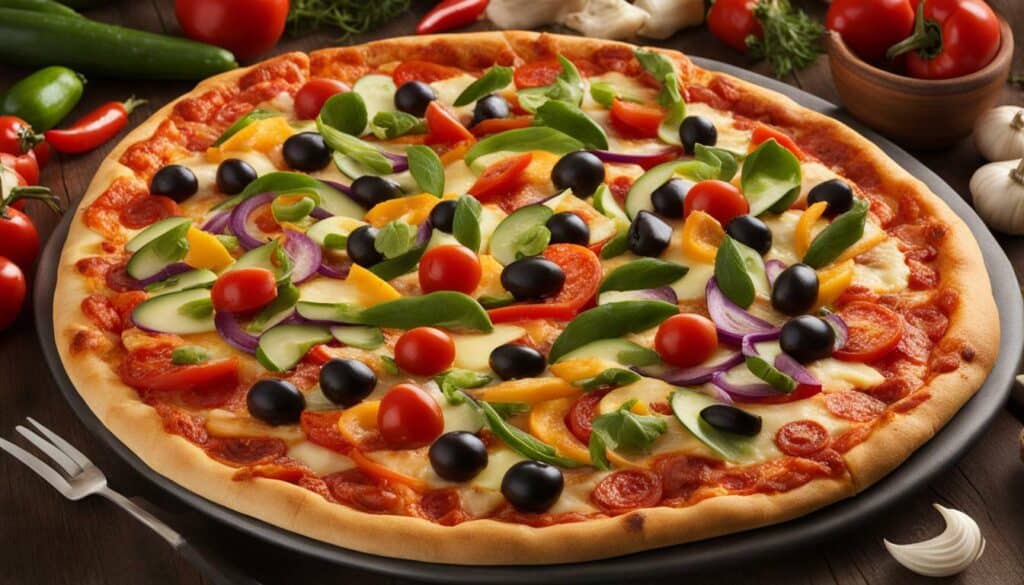
| Pizza Chain | Calories per Slice (Regular) | Calories per Slice (Skinny) |
|---|---|---|
| Pizza Hut | 180-470 | Under 250-300 |
| Domino’s | 190-310 | N/A |
| Burger King | N/A | N/A |
Lessons from the Past: Previous Attempts at Healthier Fast Food
Previous attempts by fast food chains to offer low calorie and healthier options have had mixed results. Let’s take a closer look at their experiences.
One notable example is Burger King’s attempt to introduce lower-calorie fries. In 2013, the fast food giant launched “Satisfries,” claiming that they contained 40% less fat and 30% fewer calories than their regular fries. Despite the initial hype, Satisfries failed to gain traction with consumers. The taste and texture did not match up to the regular fries, and they were ultimately discontinued in just two years.
Another example is Domino’s attempt to cater to health-conscious customers by offering a whole wheat crust. While the concept seemed promising, the reality fell short. The whole wheat crust lacked the same taste and texture as the original, and customers found it to be less satisfying. As a result, the whole wheat crust option was eventually phased out.
Lessons Learned
- Healthier fast food options must prioritize taste and quality. Customers are not willing to sacrifice flavor and enjoyment for the sake of fewer calories.
- Innovation is key. Simply reducing calories or making slight modifications to existing menu items is not enough. Fast food chains must strive for truly unique and appealing options that stand out.
- Consumer preferences play a crucial role. It’s important for fast food chains to listen to their customers and understand their needs. Offering healthier options that align with customer tastes and desires is more likely to be successful.
Overall, the fast food industry has learned valuable lessons from past attempts at healthier options. As they continue to explore low calorie and healthier alternatives, it will be interesting to see how they balance taste, quality, and customer demands in order to create successful menu offerings.
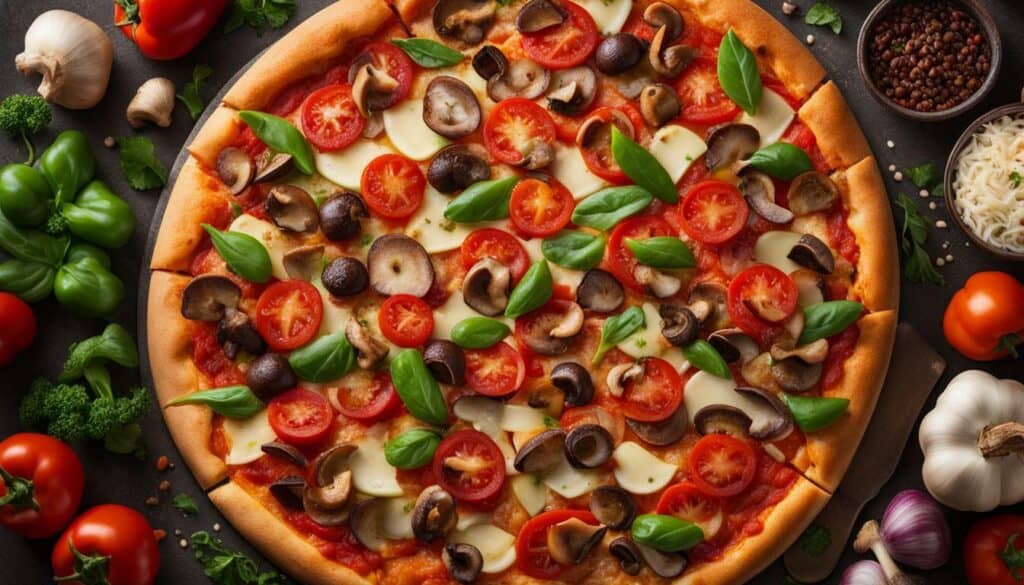
| Fast Food Chain | Healthy Option | Outcome |
|---|---|---|
| Burger King | Satisfries (lower-calorie fries) | Discontinued due to lack of consumer interest |
| Domino’s | Whole wheat crust | Phased out due to customer dissatisfaction |
A Shift Towards Healthier Choices: The Impact on the Industry
The growing demand for low calorie and healthier supreme pizza options is making a significant impact on the fast food industry. Let’s examine the implications.
More and more consumers are becoming health-conscious and looking for ways to enjoy their favorite foods without compromising their diet. This shift in consumer behavior has led to a surge in demand for low calorie and healthier pizza options, including supreme pizza. As a result, fast food chains like Pizza Hut are taking notice and adapting their menus to cater to this growing trend.
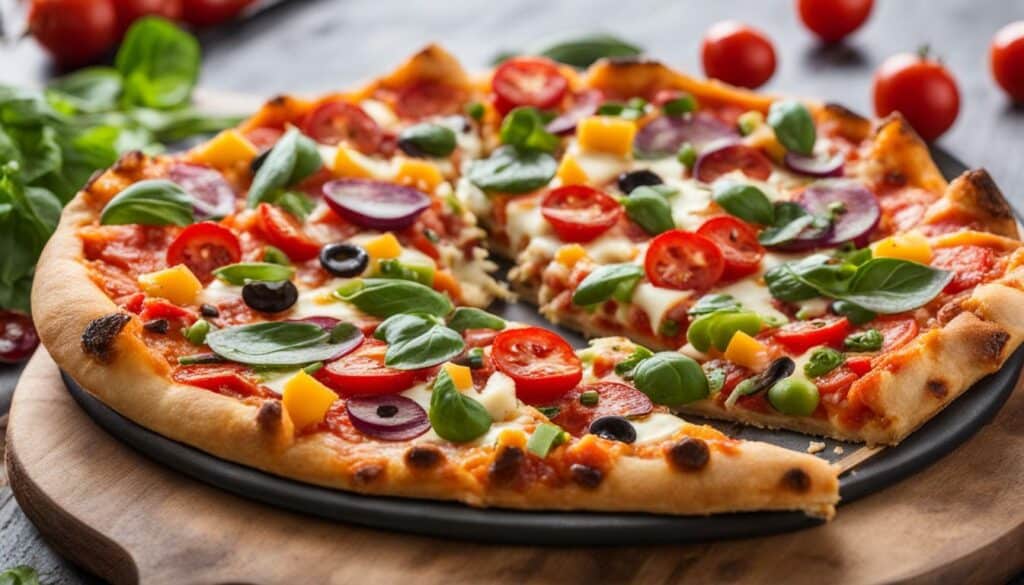
One example of this shift is Pizza Hut’s introduction of “skinny slices” in select cities. These slices contain under 250-300 calories each, achieved by using less dough and fewer toppings. This move not only provides customers with a guilt-free indulgence but also allows them to continue enjoying their favorite pizza while maintaining a healthier lifestyle.
The impact of this shift goes beyond just the menus of fast food chains. It is changing the perception of the industry as a whole. By offering healthier pizza options, these chains are showing their commitment to meeting consumer demands and promoting a more balanced approach to fast food. This not only improves their image but also encourages other players in the industry to follow suit.
| Previous Attempts | Calories per Slice |
|---|---|
| Burger King’s lower-calorie fries | 150 |
| Domino’s whole wheat crust | 200 |
However, it’s important to note that not all attempts at healthier fast food options have been successful in the past. For example, Burger King’s lower-calorie fries and Domino’s whole wheat crust did not resonate with consumers as intended. This serves as a lesson for the industry, highlighting the need for innovation and careful consideration of consumer preferences when introducing healthier choices.
In conclusion, the growing demand for low calorie and healthier supreme pizza options is driving a shift in the fast food industry. Pizza Hut’s introduction of “skinny slices” is just one example of how chains are adapting to meet consumer needs. With the rise of healthier pizza options, the industry is redefining its image and embracing a more balanced approach to fast food. It will be interesting to see how this trend continues to evolve and the impact it has on both customers and the industry as a whole.
The Future of Supreme Pizza: Healthier and Delicious
The future of supreme pizza is bright, with exciting possibilities for healthier, yet still delicious options. Join us as we explore what lies ahead. Pizza Hut, one of the leading pizza chains, is already making strides in offering low calorie supreme pizza with their innovative “skinny slices” concept. In a bid to cater to health-conscious customers, Pizza Hut is testing out these lighter options in two cities in the United States: Toledo, Ohio, and West Palm Beach, Florida. Each slice of the skinny pizza contains under 250-300 calories, achieved by using less dough and fewer toppings. This allows pizza lovers to enjoy their favorite treat without worrying about excessive calorie intake.
But Pizza Hut is not the only player in the game. As the demand for healthier pizza options continues to rise, other pizza chains are likely to follow suit. We can expect more restaurants to offer low calorie supreme pizza with reduced dough, lighter cheese, and fresher, healthier toppings. The industry is becoming increasingly aware of the need to provide healthier alternatives, and it’s an exciting time for pizza lovers who are conscious of their calorie intake.
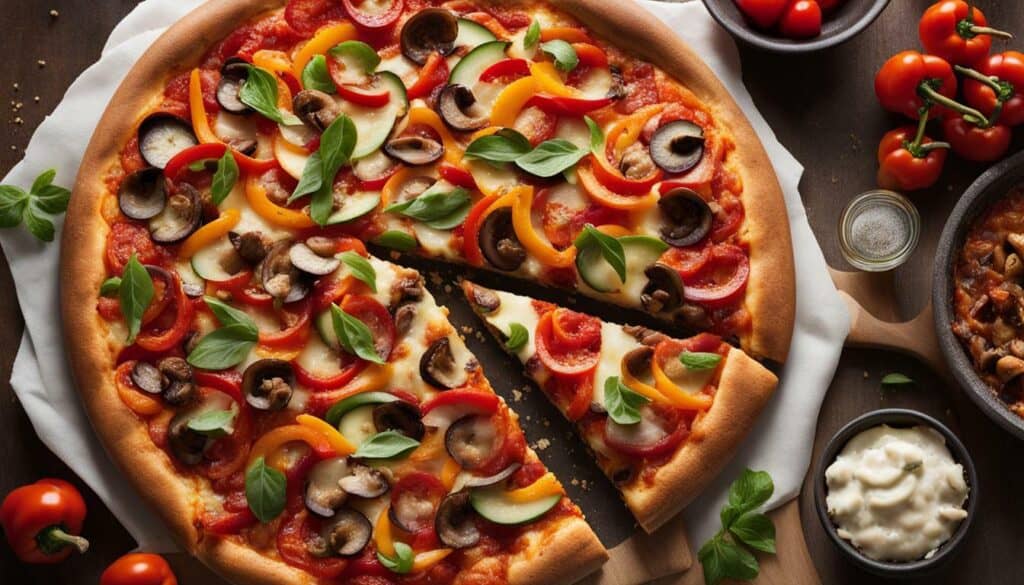
In addition to pizza chains, individuals can also take steps to make their own supreme pizza healthier. By choosing whole wheat crust instead of regular dough, adding an abundance of fresh vegetables, and opting for leaner meats or plant-based protein alternatives, homemade supreme pizza can be a nutritious and fulfilling meal. The possibilities are limitless, allowing each person to customize their pizza according to their taste and dietary preferences.
As we look to the future, it’s clear that the trend towards healthier options in the fast food industry is here to stay. Customers are becoming more conscious of their health and are actively seeking out low-calorie, nutrient-rich foods. Supreme pizza, once seen as indulgent and calorie-loaded, is transforming into a guilt-free treat that can be enjoyed as part of a balanced diet. Whether it’s through innovative concepts like Pizza Hut’s “skinny slices” or homemade creations, the future of supreme pizza is indeed healthier and delicious.
Conclusion
In conclusion, understanding the calorie content of a supreme pizza can empower you to make informed choices without sacrificing taste. Pizza lovers can now indulge in healthier options, thanks to the rise of low calorie supreme pizza offerings. Pizza Hut, for example, is currently testing “skinny slices” in select cities, which contain under 250-300 calories per slice. By using less dough and fewer toppings, they have found a way to deliver a delicious pizza experience with fewer calories.
It’s worth noting that a regular slice of Pizza Hut pizza can contain anywhere between 180 to 470 calories, depending on the size and toppings. This shows the significant impact that alternative options can have on a person’s calorie intake. By opting for low calorie supreme pizza, individuals can still enjoy their favorite food without guilt or compromising their health goals.
While the fast food industry has made attempts in the past to offer healthier options, such as Burger King’s lower-calorie fries and Domino’s whole wheat crust, the success has been limited. However, the introduction of low calorie supreme pizza options shows promise for a shift towards healthier choices in the industry.
As consumers become more health-conscious and demand nutritious options, the future of supreme pizza looks brighter than ever. With emerging trends and innovative approaches, we can expect to see even more delicious and healthier alternatives. So, next time you’re craving a supreme pizza, remember that you can choose an option that fits your dietary needs while still satisfying your taste buds.
FAQ
Q: What is a skinny slice of pizza?
A: A skinny slice of pizza is a lighter option offered by Pizza Hut that contains under 250-300 calories. It is achieved by using less dough and fewer toppings compared to a regular slice.
Q: What is the calorie content of a regular slice of Pizza Hut pizza?
A: The calorie content of a regular slice of Pizza Hut pizza can vary depending on the size and toppings. It can range anywhere between 180 to 470 calories.
Q: Where can I find the skinny slices of pizza?
A: Currently, the skinny slices of pizza are being tested in two cities: Toledo, Ohio and West Palm Beach, Florida. You can find them at select Pizza Hut locations in these areas.
Q: How do I calculate the calories in a slice of pizza based on my preferred toppings?
A: To calculate the calories in a slice of pizza based on your preferred toppings, you can use a calorie calculator or reference Pizza Hut’s nutritional information. Keep in mind that the calorie count may vary depending on the amount and type of toppings you choose.
Q: Are there any healthier topping choices for a supreme pizza?
A: Yes, there are healthier topping choices you can opt for to create a more nutritious supreme pizza. Consider adding vegetables like bell peppers, onions, or mushrooms, and choose lean protein options such as grilled chicken instead of high-fat meats.
Q: Have other fast food chains tried offering low calorie options in the past?
A: Yes, other fast food chains have made attempts to offer lower calorie options. For example, Burger King introduced lower-calorie fries and Domino’s experimented with a whole wheat crust. However, the success of these attempts has been limited.
Q: What is the impact of the shift towards healthier pizza choices on the fast food industry?
A: The shift towards healthier pizza choices has the potential to positively impact the fast food industry. As consumers become more health-conscious, offering lower calorie options can attract a wider customer base and improve the industry’s image.
Q: What does the future hold for healthier and delicious supreme pizza options?
A: The future looks promising for healthier and delicious supreme pizza options. With advancements in ingredient choices and consumer demand for nutritious meals, pizza chains have an opportunity to continue innovating and satisfying both taste and nutritional needs.
Are Corn Nuts a Healthy Snack Option Compared to a Supreme Pizza?
When considering snack options, the calories in corn nuts explained compared to a supreme pizza may surprise you. While a supreme pizza tends to be high in calories, corn nuts can be a healthier alternative. Corn nuts are lower in fat and provide a satisfying crunch, making them a more nutritious choice for those watching their calorie intake.

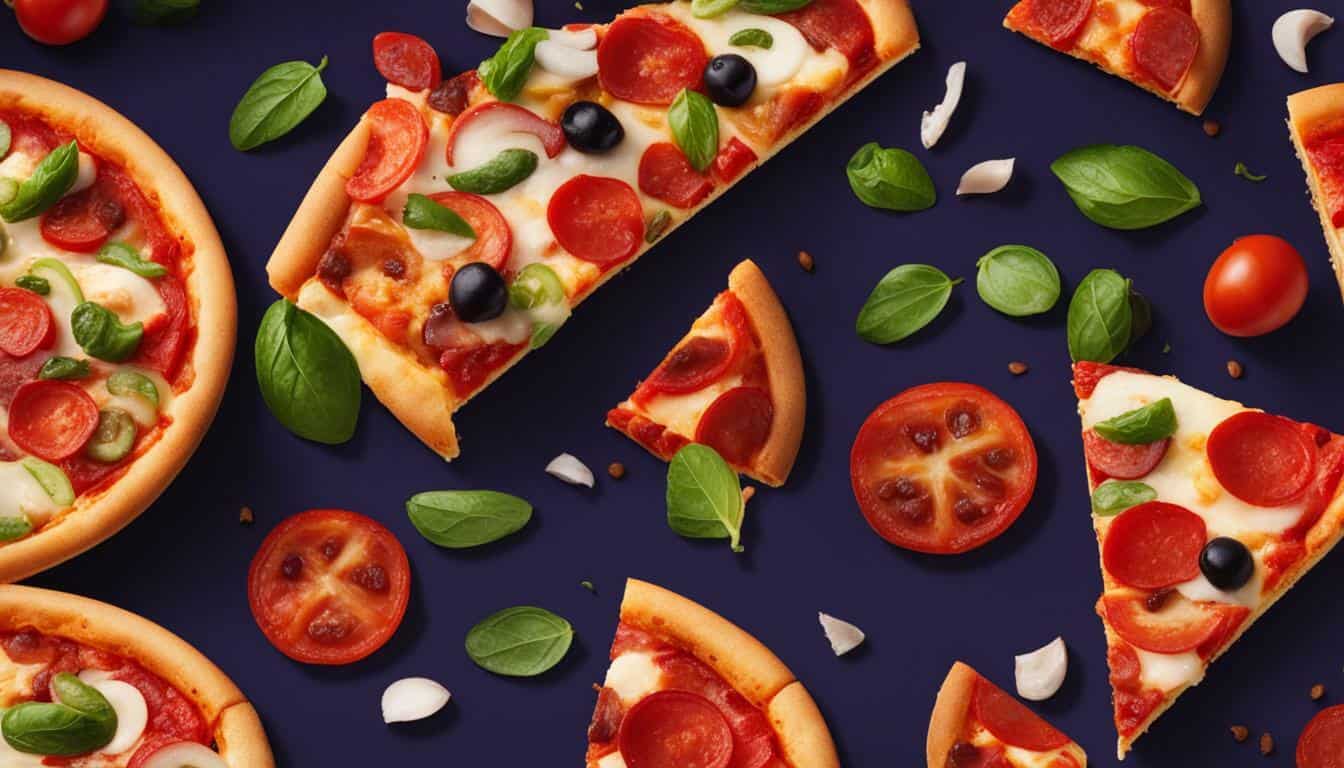



Leave a Reply